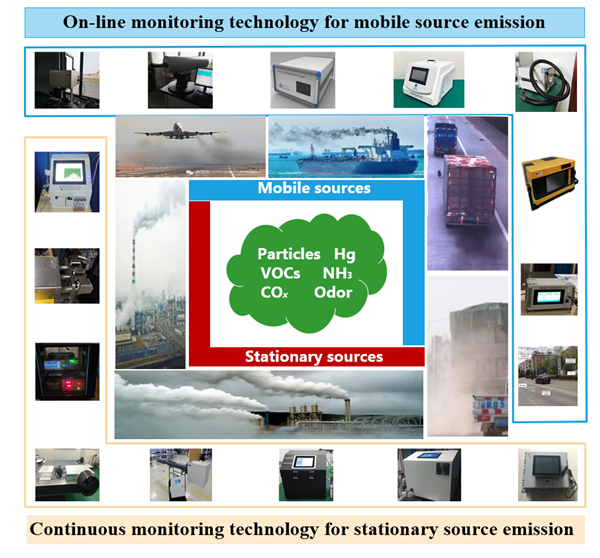
Recently, a research team led by Prof. WANG Huanqin from Hefei Institutes of Physical Science (HFIPS) of Chinese Academy of Sciences (CAS) provided an overview of the main progress in mobile and stationary source monitoring technology in China.
They described the comprehensive application of some typical instruments in vital areas in recent years, and forecasted that the on-line monitoring technology for atmospheric pollution source emissions was developing towards multi-component, miniaturization and intellectualization.
The result was published in Journal of Environmental Sciences.
Improving air quality has been priority in recent decades. Since emissions from mobile and stationary source have adverse effects on atmospheric environment and global climate, and its components, which include ultrafine particles (UFPs), volatile organic compounds (VOCs) and other reactive gases are the most harmful to human health. It is urgent to develop online monitoring technology for atmospheric pollution source emissions.
Since 2016, with the help of a series of on-line measurement methods for ultra-low emission key pollutants from pollution sources, the research team realized highly sensitive on-line monitoring of typical pollutants such as ultra-low emission of ultrafine particles, volatile organic compounds and flue gas mercury from pollution sources.
A number of on-line monitoring technical equipment have been developed, such as vehicle emission ultrafine particles monitor, portable vehicle volatile organic matter mass spectrometer, and pollutant monitors.
According to the paper, the online monitoring technology of emission pollutants from mobile sources and stationary sources is developing towards the direction of multicomponent, miniaturization and intelligence.

Researchers from HFIPS, CAS provided an overview of the main progress in mobile and stationary source monitoring technology in China.